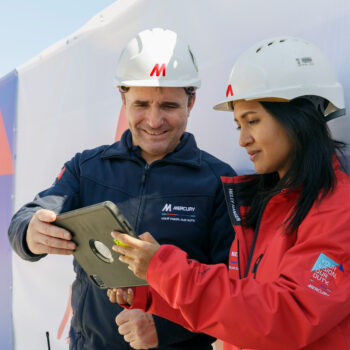News & Insights

Building for tomorrow: Improving carbon footprint using EC3
Improving carbon footprint using EC3
With rising global temperatures, climate change is considered the most serious issue that we must address in the 21st century. The primary cause of climate change is carbon emissions, and a growing number of leading multinationals are now looking to their building contractors to source materials that create minimal greenhouse gases. It is anticipated that measuring and reporting the embodied carbon of building materials during extraction, production and delivery to site may soon become an expected building metric.
Being responsive to customer requests, Mercury has partnered with Building Transparency and a confidential client to leverage the Embodied Carbon in Construction Calculator (EC3). This free, open access tool enabled Mercury to measure the embodied carbon of construction materials on some of our most recent projects. One example is a data centre project in the Netherlands that was delivered over the past three years.
From using the EC3 tool, Mercury has established that it can achieve significant reductions in the concrete, steel structure and the building envelope for its clients. These embodied carbon reductions can be achieved by analysing the various Environmental Product Declarations (EPDs) available and procuring the least carbon intensive options. As pilot sponsors of this tool, Mercury is the first European prime contractor to embark on this innovative journey.
What is embodied carbon and how is it measured?
For all building products and materials, carbon is released in two stages: the embodied carbon stage and the operational carbon stage. Operational carbon is defined as the Greenhouse Gases (GHGs) emitted during the use of a building. Embodied carbon is the carbon footprint of a material and considers all GHGs emitted throughout the product’s supply chain.
This part of the carbon lifecycle is known as ‘cradle to gate.’ It includes the GHGs that are associated with procuring, mining, and harvesting raw materials, production of goods, transportation, and installation.
What is EC3?
EC3 is a free and easy to use tool that allows benchmarking, assessment and reductions in embodied carbon per material category, focused on the upfront supply chain emissions of construction materials. It uses building material quantities from construction estimates and BIM models. It can be used both in late design phase and procurement phases of a project to quantify and understand the embodied carbon per material and enable us to specify and procure lower carbon alternatives.
Beyond50 – Our Five Year Strategy
Beyond50 is about harnessing the momentum we’ve built up over 50 years to push further and reach further. This project forms part of Mercury’s Beyond 50 strategy, sitting under our ‘Digital Edge’ and ‘Our Planet, Our Duty’ pillars.
This project was commissioned and brought into the Beyond50 programme following research completed by a team from the Mercury Graduate Programme. The graduate team members were Laura Dunne, John Joe Kelly, Jonathan Gray, Kundan Dandangi, Diego Pacheco, Vaois Rivazas, Kieron Maher and Guylene Sockeng. Well done to this group who were the catalyst for this project.
The technology around us is advancing at a speed like never before and we’re moving just as fast. Digital Edge is Mercury’s continuous investment in the latest digital tools to push our capabilities beyond borders, allowing us to deliver best-in-class large scale projects wherever our clients are. Read more about innovation at Mercury here.
Our Planet, Our Duty is our promise to help create a more sustainable environment around us. We believe that we each have a role to play in contributing to the sustainable development of our planet. Read more here.


